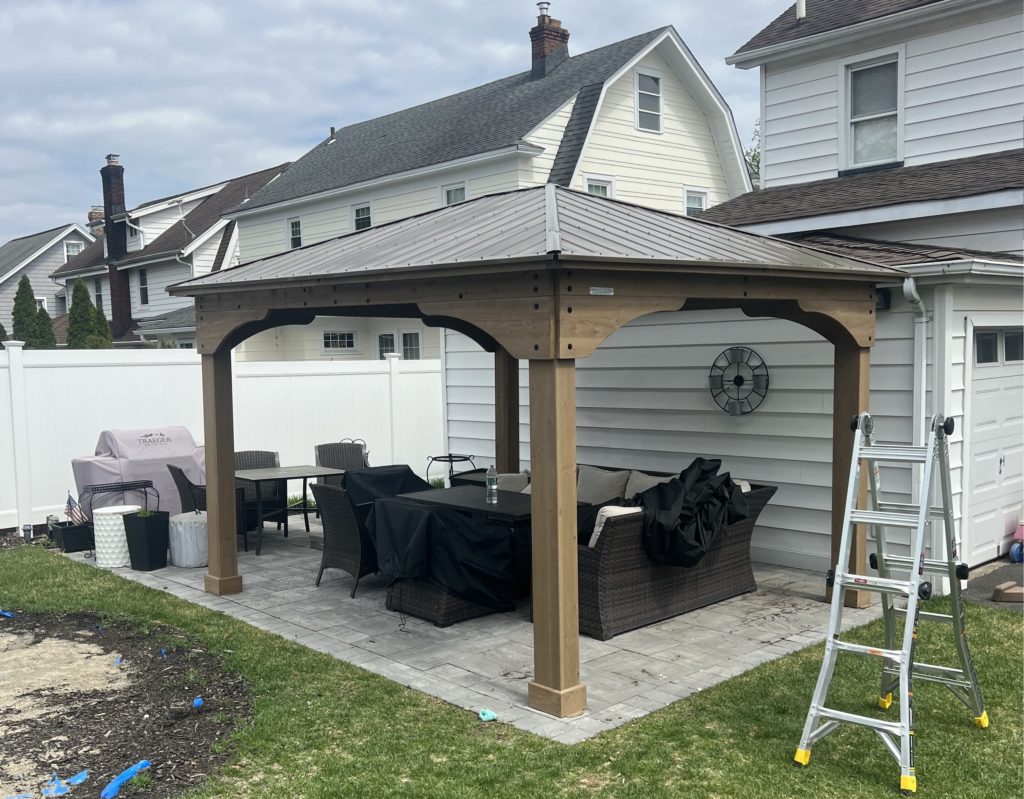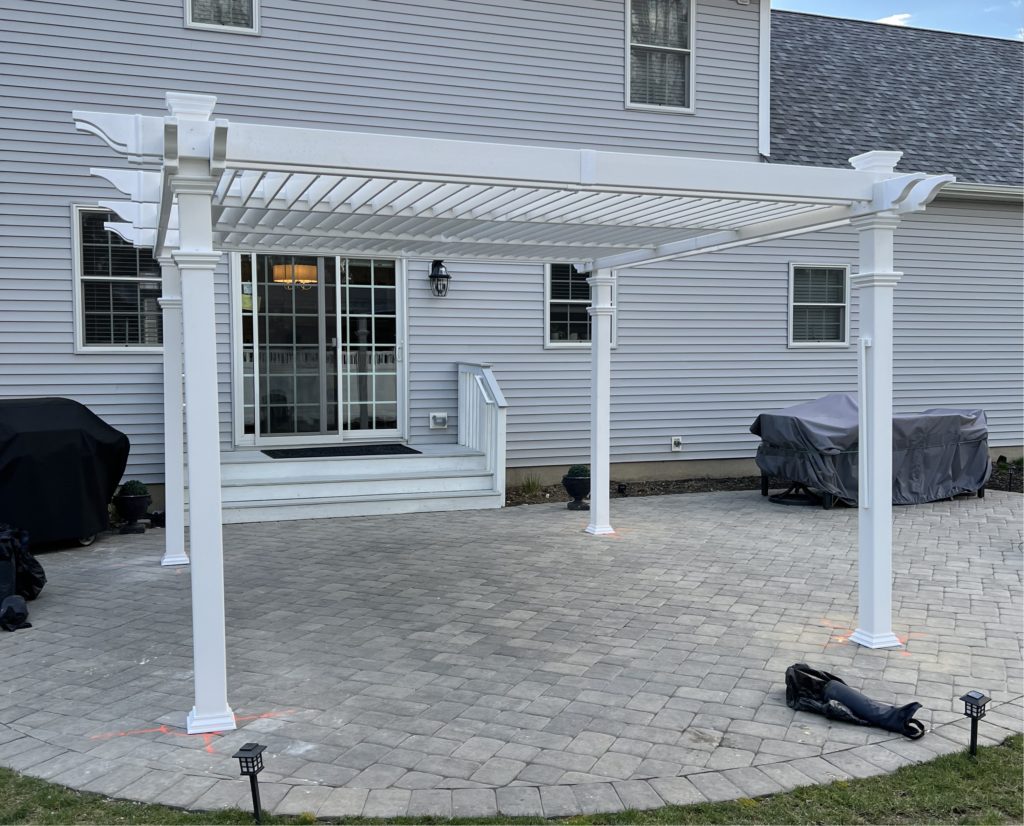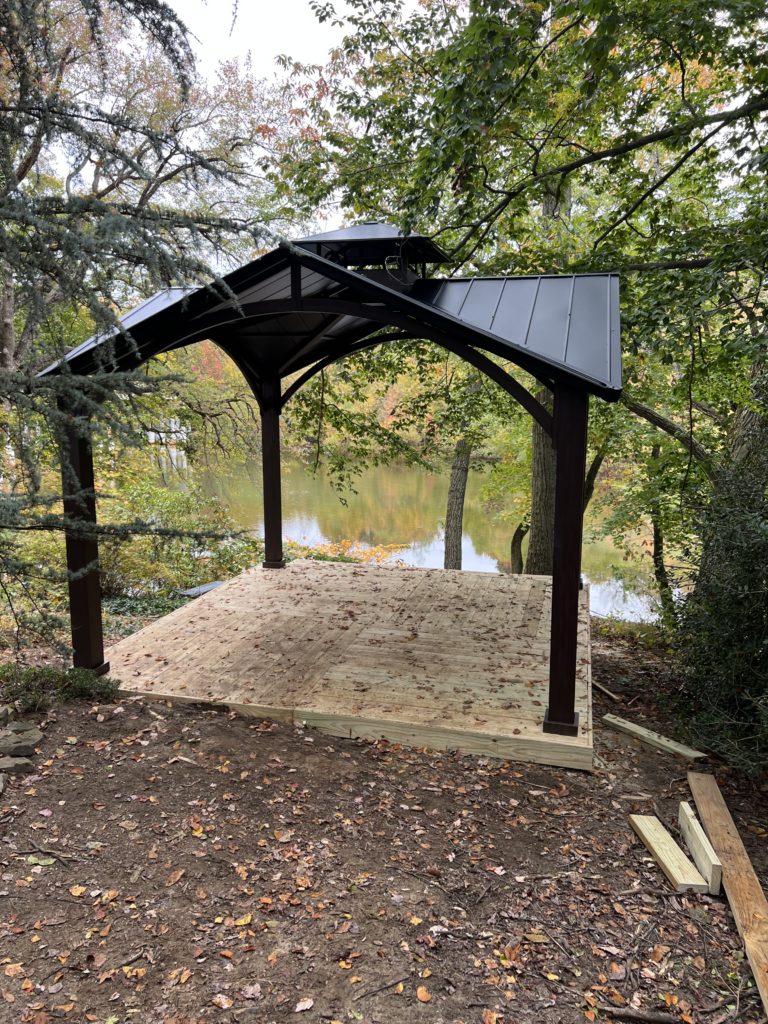When it comes to cooling and adding style to your home, a ceiling fan can be a perfect addition. Whether you’re looking to install, replace or repair a ceiling fan in Haskell, NJ, it’s always essential to hire a professional who can ensure that the job is done safely and efficiently.
OUR CONTACT
Email Support:
info@gazebo-installation.com
Ask your question:
info@gazebo-installation.com
Some of Our Portfolio Gazebo and Pergola Assembly Projects



Installing a ceiling fan requires electrical expertise and knowledge of the specific wiring in your home. It’s not a task for DIY enthusiasts or inexperienced individuals. By hiring a professional electrician, you can have peace of mind knowing that your ceiling fan will be installed correctly, complying with all safety regulations.
If your existing ceiling fan is old and no longer functioning effectively, it might be time for a replacement. Upgrading to a newer model can provide you with improved performance and energy efficiency, allowing you to save on your monthly utility bills. Hiring a professional for the replacement ensures that the new fan is installed correctly and all electrical connections are properly made.
For ceiling fan repair in Haskell, NJ, it’s best to rely on professionals who have the knowledge and experience to diagnose and solve any issues. Whether it’s a motor problem, a faulty switch, or a wobbly fan, an expert electrician can quickly identify the problem and provide the necessary repairs. Attempting to repair a ceiling fan on your own can be dangerous and may lead to further damages or injuries.
When it comes to ceiling fan installation, replacement, or repair in Haskell, NJ, it’s crucial to hire a licensed and insured electrician. They will have the expertise and tools to complete the job correctly, ensuring that your ceiling fan operates safely and efficiently for years to come.
Ceiling Fan Installation in Haskell NJ: Tips for a Successful Installation
Installing a ceiling fan in your home in Haskell NJ can provide numerous benefits, including improved air circulation, energy efficiency, and added style. However, before you begin the installation process, it’s important to keep in mind a few key tips to ensure a successful installation.
1. Choose the right size and style: Before purchasing a ceiling fan, carefully consider the size and style that will best suit your space. Measure the room to determine the appropriate fan size and choose a style that complements your existing decor.
- For smaller rooms, opt for a fan with a blade span of 36 to 42 inches.
- For larger rooms, choose a fan with a blade span of 52 inches or more.
2. Check for proper electrical support: Before proceeding with the installation, ensure that your electrical system can support the new ceiling fan. If you’re unsure, it’s recommended to consult a professional electrician to assess and make any necessary upgrades.
3. Gather the necessary tools: To make the installation process smoother, gather all the tools you’ll need beforehand. This may include a ladder, screwdriver, wire stripper, electrical tape, and pliers.
- Ensure the power is turned off:
- Follow the manufacturer’s instructions:
- Secure the mounting bracket:
- Connect the wires:
- Attach the fan blades and housing:
- Test the fan:
Before beginning any electrical work, it’s essential to turn off the power to the room at the circuit breaker. This will help prevent any accidents or injuries.
Every ceiling fan installation will vary slightly, so it’s crucial to carefully read and follow the manufacturer’s instructions. This will ensure that the fan is installed correctly and safely.
Start by attaching the mounting bracket to the ceiling, using screws and a screwdriver. Ensure it is securely fastened and level.
Follow the instructions provided with your fan to properly connect the wires. This may involve connecting the wires from the fan to the corresponding wires in the ceiling junction box.
Once the wiring is complete, carefully attach the fan blades and housing according to the manufacturer’s instructions. Use the provided screws and a screwdriver to secure them in place.
Before finishing the installation, turn the power back on and test the fan to ensure it is functioning correctly. Check for any unusual noises or vibrations that may require adjustments.
By following these tips, you can ensure a successful ceiling fan installation in Haskell NJ. However, if you’re unsure or uncomfortable with the installation process, it’s always best to hire a professional electrician to handle the job safely and efficiently.
Understanding the Importance of Proper Installation
Installing a ceiling fan may seem like a simple task that anyone can do, but it is crucial to understand the importance of proper installation. A poorly installed fan can not only be a safety hazard but also lead to frequent repairs and inefficiency in its operation. To ensure the longevity and optimal performance of your ceiling fan, it is essential to hire professionals or follow proper installation guidelines.
Safety: One of the primary reasons for proper installation is safety. An improperly installed ceiling fan can pose serious risks, such as electrical hazards and falling parts. Professionals have the knowledge and expertise to handle the electrical connections safely, ensuring that your ceiling fan operates without any potential dangers.
Efficiency: A properly installed ceiling fan will function efficiently, providing you with maximum comfort and energy savings. Professionals understand the correct mounting height and angle for optimal air circulation. They also ensure that the blades are balanced correctly, preventing any unnecessary noise or vibration during operation.
The Benefits of Professional Installation
- Expertise: Professional installers have the necessary knowledge and experience to handle any type of ceiling fan installation. They are familiar with the wiring and electrical requirements, ensuring a safe and reliable installation.
- Time and Convenience: Hiring professionals for ceiling fan installation saves you time and effort. They come equipped with the right tools and can quickly complete the installation, allowing you to enjoy your new fan without any hassle.
- Warranty: Most ceiling fan manufacturers require professional installation to validate the warranty. By hiring professionals, you can ensure that your fan is properly installed, and in case of any issues, you can take advantage of the manufacturer’s warranty.
Proper installation is essential for the safe and efficient operation of your ceiling fan. By hiring professionals or following the correct installation guidelines, you can avoid potential safety hazards and ensure optimal performance, providing you with comfort and energy savings for years to come.
Choosing the Right Ceiling Fan for Your Space
When it comes to choosing a ceiling fan for your space, there are several factors that you should consider. The right ceiling fan can not only enhance the aesthetic of the room but also provide comfort and energy efficiency. Here are some important things to keep in mind when selecting a ceiling fan:
Size: The size of the room plays a significant role in determining the appropriate size of the fan. For smaller rooms, such as bedrooms or offices, a fan with a blade span of 42 to 48 inches is usually sufficient. Larger rooms, such as living rooms or master bedrooms, may require a fan with a blade span of 52 inches or more.
Style: Ceiling fans come in a variety of styles to fit different room décors. From traditional to modern, there is a wide range of options available. Consider the overall theme and design of your space to ensure that the fan complements the existing fixtures and furniture.
- Blade Material: The material of the fan blades can affect both the performance and appearance of the fan. Common options include wood, metal, and plastic. Wood blades tend to be quieter but may require more maintenance. Metal blades offer durability, while plastic blades are often more affordable.
- Motor: The motor is the heart of any ceiling fan. It determines the fan’s functionality, performance, and energy efficiency. Look for a fan with a powerful motor that operates quietly and efficiently. Different motor types, such as AC or DC, can also impact the fan’s overall performance and energy consumption.
- Controls: Consider the type of controls you prefer for your ceiling fan. Options include traditional pull chains, wall-mounted switches, or remote controls. Some fans also offer smart controls that can be integrated with home automation systems.
- Additional Features: Some ceiling fans come with extra features such as built-in lights, reversible blade rotations, or even humidifiers. Assess your specific needs and preferences to determine which additional features, if any, are important to you.
By considering these factors, you can choose the perfect ceiling fan for your space, ensuring both functionality and style. Whether you are looking for a fan for your bedroom, living room, or any other area in your home, the right choice can make a significant difference in your comfort and overall enjoyment of the space.
Gathering the Necessary Tools and Equipment
Before proceeding with the installation, replacement, or repair of a ceiling fan, it is essential to gather all the necessary tools and equipment to ensure a smooth and efficient process. The right tools will not only make the job easier but also help prevent any potential accidents or damages. Below is a list of tools and equipment that are typically required:
- Screwdriver: A screwdriver with both Phillips and flathead tips is essential for removing and installing screws.
- Wire cutters/strippers: These tools will be needed for cutting and stripping the electrical wires.
- Voltage tester: A voltage tester is crucial for ensuring the power to the ceiling fan is properly disconnected before starting any work.
- Pliers: Pliers are useful for bending and securing wires.
- Wire connectors: Wire connectors are required for connecting and securing the electrical wires.
- Tape measure: A tape measure will come in handy for measuring the distance between the fan blades and the ceiling, ensuring proper clearance.
- Ladder: Depending on the height of the ceiling, a ladder may be necessary to reach and install the fan.
- Ceiling fan mounting kit: This kit typically includes a mounting bracket, screws, and any other necessary hardware for securely attaching the fan to the ceiling.
- Circuit tester: A circuit tester can help identify if the power supply to the fan is functioning correctly.
- Step ladder: If the ceiling is exceptionally high, a step ladder may be required to access and work on the fan.
- Safety glasses: Wearing safety glasses is essential to protect your eyes from any debris or accidental contact.
It is crucial to gather all the required tools and ensure they are in good working condition before starting any ceiling fan installation, replacement, or repair project. Using the appropriate tools will not only make the process smoother but also help ensure safety and achieve satisfactory results.
OUR CONTACT
Email Support:
info@gazebo-installation.com
1126 Falls Terr, Union NJ 07083
Ask your question: info@gazebo-installation.com